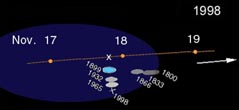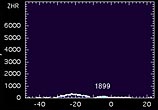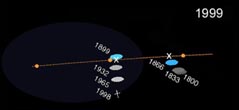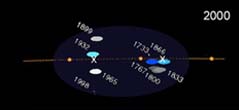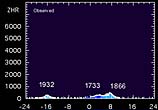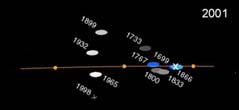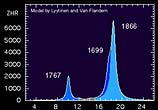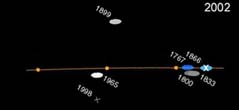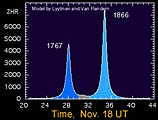|
Leonid MAC |
| home |
| View the shower |
| Mission Brief |
| Science Update |
| Media Brief |
| links |
|
What is the occasion all about?
LEONIDS: RARE EARTH ENCOUNTER WITH COMET DUST TRAILS
In 1999, we saw the first meteor storm of the space age. Even now,
the societal and physical effects of meteor storms remain unclear.
Will a particularly intense meteor storm cause satellites to malfunction some time in the future?
What chemical reactions will occur as the meteors incinerate? Might cometary debris have influenced the development of life on Earth?
The current episode of Leonid storms is a unique chance to study these issues.
The figures show how the showers have manifested itself in the past years
and how our understanding has gradually improved with new observations.
The observed Leonid shower rates in the years 1998, 1999 and 2000 during Leonid MAC missions and from data gathered by the International Meteor Organisation are shown on the right. The rates are in unit of "Zenith Hourly Rate", the count of meteors seen by a visual observer when the sky conditions are ideal and the shower radiant is in the zenith. The horizontal axis shows the time in hours since November 18 at 0h UT of a given year. The graphs for 2001 and 2002 are predicted rates by one of several dust models, in particular that of Esko Lyytinen and Tom Van Flandern (which is sort of in the middle of predicted levels of activity). Note that the encounter with each blue trail resulted in a peak of Leonid shower activity. Each encounter is unique and provides important information about the exact location of the dust trails and the dust properties of different ages. From precise measurements, Leonid MAC PI Dr. Peter Jenniskens derived such properties as the meteoroids density, how much dust is ejected by the comet in each return. More information here.
|


